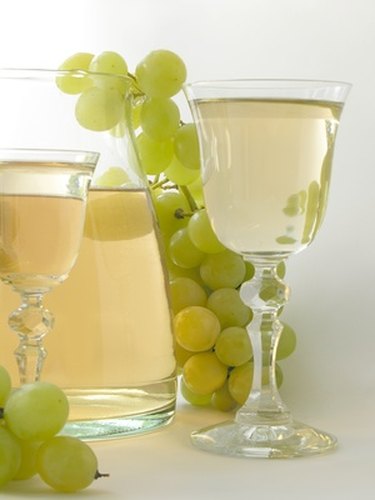
Degrees Baume and degrees Brix both indicate the sugar content of a substance. Producers of wine, beer, juice, maple syrup, corn syrup and honey use these measurements, according to David Ball in the "Journal of Chemical Education." Measurements in degrees Baume use a scale of specific gravity -- the density of a substance in relation to the density of water -- and are used when there is a known relationship between the sugar concentration and the specific gravity of the substance. Measurements in degrees Brix indicate the number of grams of sucrose per 100 grams of the substance; 10 degrees Brix means 10 grams of sugar per 100 grams.
Step 1
Check to ensure that the specific gravity of the substance characterized using degrees Baume is greater than that of water. The Baume scale uses a different scale for substances with a specific gravity less than that of water, but for grapes and syrups the density should be greater.
Video of the Day
Step 2
Multiply the degrees Baume by 1.905.
Step 3
Subtract 1.6 from this number to obtain degrees Brix.
Tip
Approximate the percentage of alcohol in wine or beer by multiplying 0.55 by the degrees Brix of the original mixture.
Video of the Day